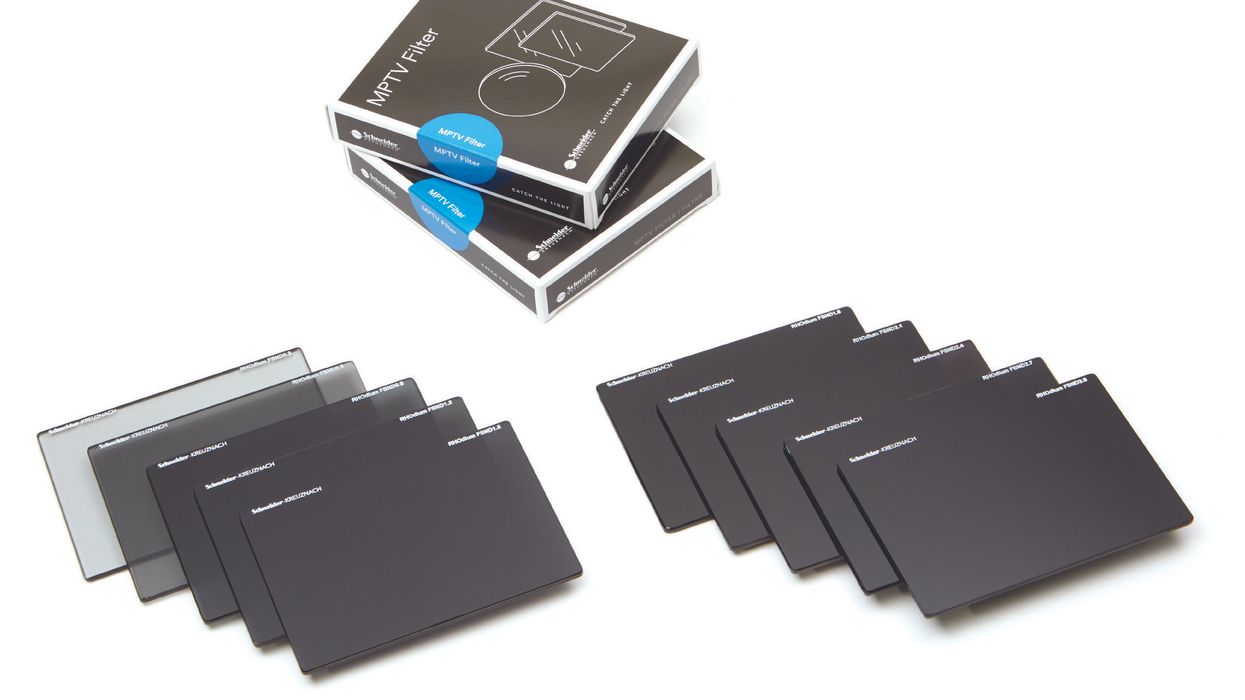Schneider Releases Its Most Versatile ND Filter Yet
This set is great for any camera, new or old.

Schneider Optics really has it out for infrared light. And that's a good thing, considering the havoc that light will wreak on your project if any leaks through. For years we've seen ND filters that have been plagued with these types of leakage issues, but with all the tests this set has gone through you can really trust their new RHOdium Full Spectrum Neutral Density filters will get your image right.
In the lab, RHOdiums are the first filters to undergo tristimulus scanning, a more critical color measurement than methods previously used to measure filter quality. This method verifies neutrality by utilizing a colorimetric algorithm that compares samples to perfectly neutral light. The result is unprecedented accuracy.
In addition, RHOdium FSND filters are manufactured to finer flatness/parallelism specifications than ever before. These new filters help resolve even the finest detail. Schneider has engineered an extremely thin neutral density interlayer sandwiched between two sheets of crystal-clear Schott water-white glass. The thin interlayer results in excellent transmitted wavefront flatness/parallelism.
The result is a lineup of high-end neutral density filters made to exceed the critical color standards of the newest 4K, 6K, and 8K resolution cameras. Available in 6x6 and 4x5.65 sizes, they come in a full range of densities: 0.3, 0.6, 0.9, 1.2, 1.5, 1.8, 2.1, 2.4, 2.7, and 3.0. The 4”x5.65” size starts at $449 while 6”x6” starts at $699.
Out of the lab and into the field, tests have proven the set's ability for even suppression in UV, visible and IR spectrums. According to cinematographer Dan Zimbaldi, “The Schneider RHOdium NDs preserve that natural color while still capturing the full spectrum evenly. This is of particular importance in post production color grading because it allows the colorist to grade all the shots the same, filtered or unfiltered.”

In the image above, shot on a RED with a Helium sensor, all 10 FSND densities are represented with a control (no filter) image for comparison. Exposure was adjusted accordingly per filter density so that the same image would repeat throughout the test. A full color chart used to show potential color bias, while the model is wearing a black shirt in comparison to the black in the color chart to show any infrared leak.
To read more about the filters and to purchase them for yourself head here.











